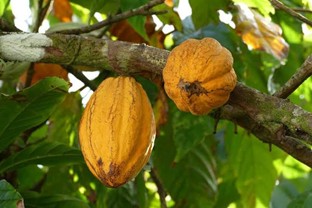Ethiopia’s agricultural diversification strategy identifies cocoa as a potential $500 million annual export commodity by 2030, with MIDROC Investment Group’s research demonstrating successful cultivation capabilities that could transform the nation’s agricultural export portfolio.
Five years of comprehensive research collaboration with the Date Agricultural Research Center confirms Ethiopia’s southwestern regions possess optimal conditions for cocoa production, with international market prices ranging $8,000-$12,000 per ton offering higher returns than traditional coffee exports.
The ambitious expansion plan targets 200 hectares of cocoa cultivation within two years, building from current 50-hectare pilot projects at Bebeka Coffee Plantation that have successfully produced over 54,000 viable cocoa seedlings demonstrating commercial viability.
“Cocoa represents a strategic opportunity to diversify our agricultural economy while leveraging our expertise in cash crop production,” explained Beshada Worku, MIDROC Investment Group’s Bebeka Coffee Farm General Manager.
Economic analysis reveals cocoa’s competitive advantages, including three-year maturation periods compared to coffee’s longer development cycles, plus multiple industrial applications spanning chocolate manufacturing, cosmetics, pharmaceuticals, and confectionery sectors that ensure diverse market demand.
Global cocoa supply shortages create favorable market conditions for new producers, with established markets in Côte d’Ivoire and Ghana facing production challenges that open opportunities for Ethiopian producers to capture market share in growing international demand.
Domestic value addition opportunities include planned chocolate manufacturing facilities that could process Ethiopian cocoa locally, reducing import dependency while creating 5,000 manufacturing jobs and capturing higher-margin processed product revenues.
Training programs targeting 10,000 smallholder farmers in cocoa cultivation techniques ensure broad-based economic participation while leveraging existing agricultural extension services that have successfully supported coffee production across similar geographic regions.
Infrastructure development requirements include processing facilities, storage systems, and transportation networks that necessitate $150 million in complementary investments but create additional employment for 15,000 people in logistics and processing sectors.
Export market development focuses on premium quality positioning, with Ethiopian cocoa potentially commanding price premiums similar to specialty coffee through emphasis on sustainable production practices and unique flavor profiles from highland cultivation.
Research continues into optimal varieties and cultivation techniques specific to Ethiopian soil and climate conditions, with international partnerships providing technical expertise that accelerates commercial production timelines and ensures quality standards.
The cocoa initiative supports Ethiopia’s broader economic diversification goals, reducing dependency on single commodity exports while creating resilient agricultural income sources for rural communities that have traditionally relied primarily on coffee production.
